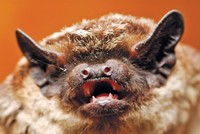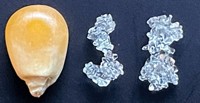Advertisement
Grab your lab coat. Let's get started
Welcome!
Welcome!
Create an account below to get 6 C&EN articles per month, receive newsletters and more - all free.
It seems this is your first time logging in online. Please enter the following information to continue.
As an ACS member you automatically get access to this site. All we need is few more details to create your reading experience.
Not you? Sign in with a different account.
Not you? Sign in with a different account.
ERROR 1
ERROR 1
ERROR 2
ERROR 2
ERROR 2
ERROR 2
ERROR 2
Password and Confirm password must match.
If you have an ACS member number, please enter it here so we can link this account to your membership. (optional)
ERROR 2
ACS values your privacy. By submitting your information, you are gaining access to C&EN and subscribing to our weekly newsletter. We use the information you provide to make your reading experience better, and we will never sell your data to third party members.
Sustainability
Newscripts
Speaking for the trees: The real Lorax and upcycled conference posters
by Jessica Marshall
August 31, 2018
| A version of this story appeared in
Volume 96, Issue 35
Dr. Seuss’s fanciful Lorax may have a real-life inspiration, with a scientific paper to back up the claim. A team reports that the patas monkey (Erythrocebus patas) may have been the muse for the conservationist Lorax, who speaks for the trees in Seuss’s famous tale of the same name (Nat. Ecol. Evol. 2018, DOI: 10.1038/s41559-018-0628-x).

When Nathaniel J. Dominy, an evolutionary biologist, and Donald E. Pease, an English professor and Seuss biographer, got to talking at Dartmouth College—Seuss’s alma mater where both Dominy and Pease work—they homed in on Kenya’s patas monkey. Dominy remarked that the patas monkey, familiar to him from fieldwork, resembled a Seuss character. Meanwhile, Pease noted that Theodor Seuss Geisel (Seuss’s real name) had written 90% of “The Lorax” while visiting Kenya in 1970. What’s more, the patas monkey makes a whistling noise that could have inspired the “sawdusty sneeze” of the Lorax; it often stands on hind legs like the upright character; and it relies on a tree—the whistling thorn acacia—for much of its food. Perhaps these are the Truffula trees that the Lorax defends.
To bolster its circumstantial case, the team worked with New York University anthropologists Sandra Winters and James P. Higham, who had already used facial recognition software to compare 22 species of monkeys, including the patas. The researchers added the faces of the Lorax and another Seuss character to the database, and it supported their notion: The Lorax matched either the patas or the blue monkey, a species Geisel probably never encountered. Sadly, the researchers note, the patas has suffered habitat loss in recent years. It seems the species needs a Lorax of its own.
Fashionable posters

The Lorax would no doubt cheer the following tree-saving trend. The Newscripts gang has been on the case of the cloth-printed poster since it first arrived on the scene several years ago, allowing hypotheses to be gently folded and tucked into luggage—or even a purse—and freeing conference-goers from the protective tubes required to keep paper posters session-worthy.

But the question remained: What to do with the data-coated fabric once it was done showcasing its findings? Several scientists on Twitter reported answers, including tote bags (University of California, Los Angeles, chemist Ellen Sletten’s mother made a bag for her, shown); a no-effort, no-frills picnic blanket or tablecloth; and a wastebasket. Veronika Cheplygina of Eindhoven University of Technology tells Newscripts that the company REpost Science (which offers a number of poster remake items, including aprons and a stuffed dachshund) was willing to copy the pattern of her favorite skirt and turn her poster into a fine garment that she wears at conferences. It’s got too many colors for her usual taste, she notes. But its best feature, hands down, is its pockets.
Advertisement
Jessica Marshall wrote this week’s column. Please send comments and suggestions to newscripts@acs.org.





Join the conversation
Contact the reporter
Submit a Letter to the Editor for publication
Engage with us on Twitter